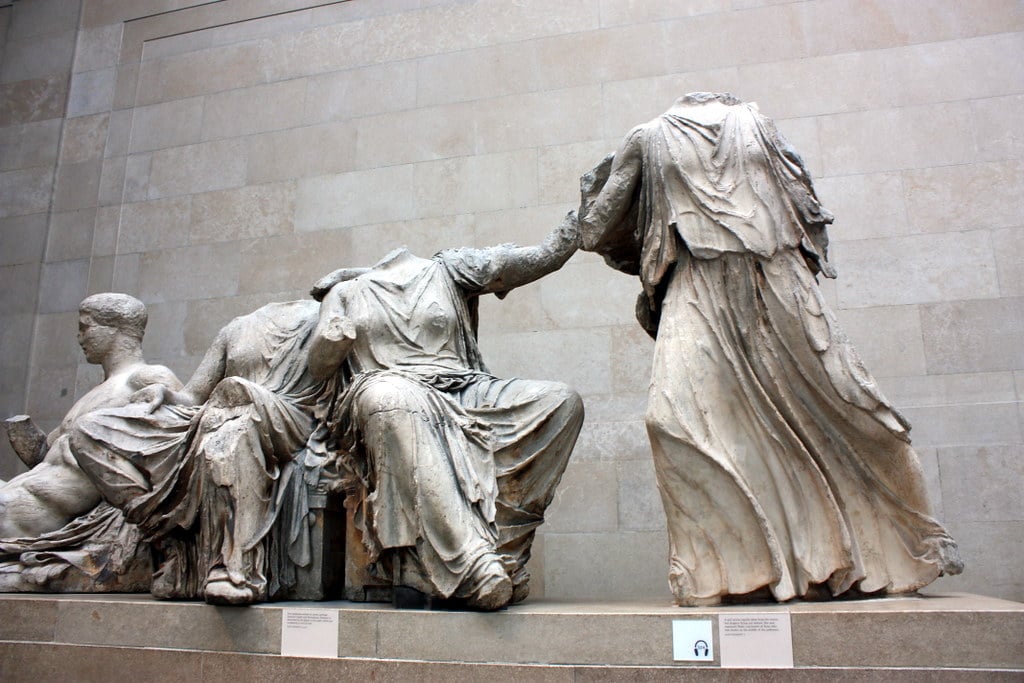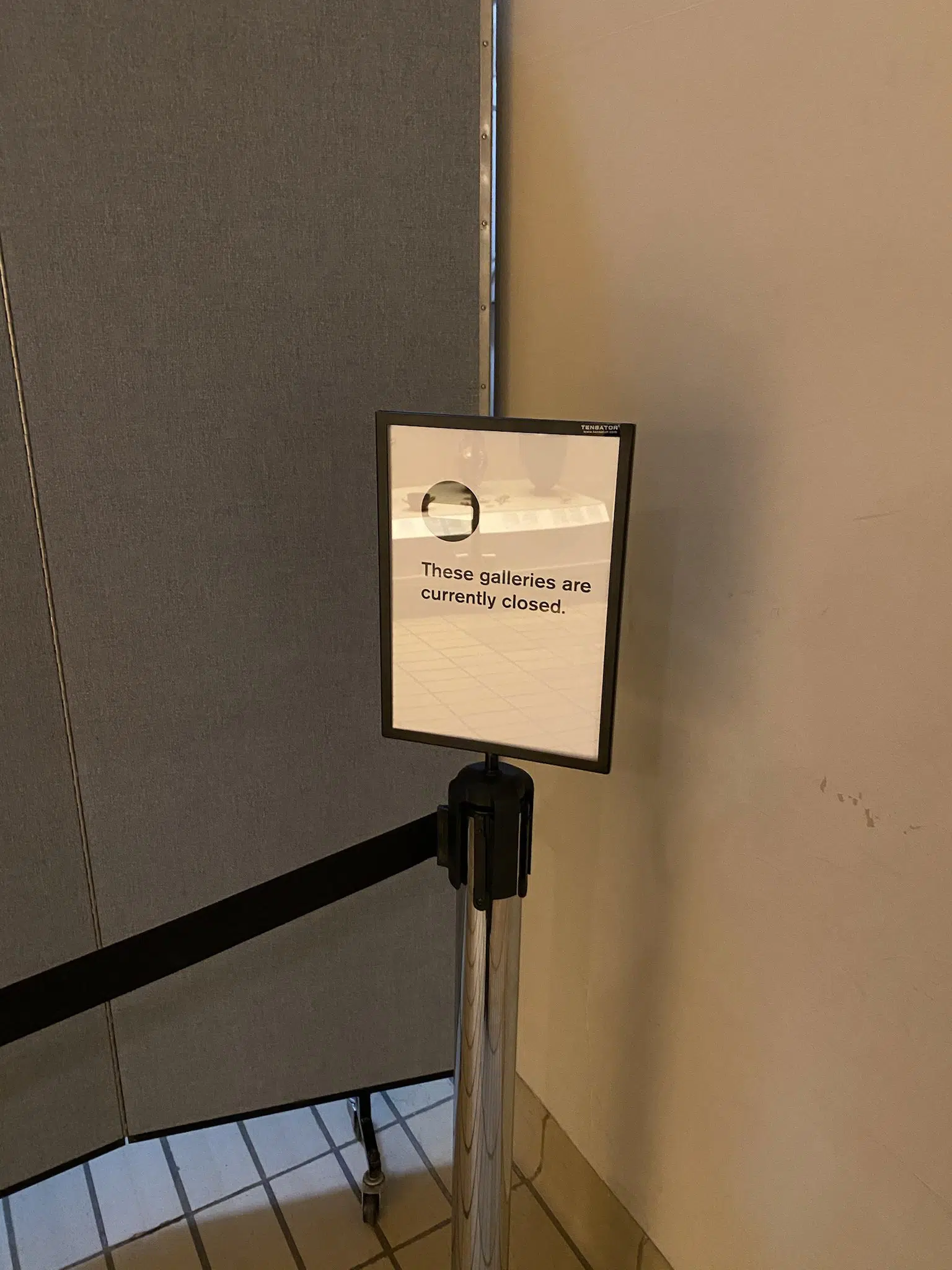
For those keeping track of the British Museum’s treatment of the Parthenon Marbles, the statues and friezes taken by Lord Elgin from atop the Acropolis in 1801, the news is not good.
The gallery where they were displayed has now been closed for an entire year; although it will reopen on December 13, lingering questions remain as to the leaks that continue to occur in the roof over their gallery.
Leaks over both the Museum’s Greek and Assyrian galleries, causing damage to the floors, are ostensibly the reason for the prolonged closure. Fair enough – but that only strengthens the clarion call for their return to their native land, where they would be placed on display in a state-of-the-art museum which has dedicated an entire floor to them.
While the gallery is set to reopen in December, the ongoing dispute between the British Museum and Greece continues to rankle, with the prime ministers of each country discussing the subject once again this week during a visit by Greek PM Mitsotakis to Great Britain.
Parthenon Marbles off limits for more than one year while damage repaired
The problematic infrastructure of the Museum itself, which is actually many different buildings with separate roofs, built over the centuries, is one of the main issues of contention.
As recently as January of 2020, a blue plastic bucket and absorptive pads were seen on the floor of the Assyrian gallery, which houses priceless friezes of its own. While the pandemic closure allowed the institution to take stock of its physical plant and make the necessary repairs, the question continues whether or not the Museum has the right to own these and other objects, which constitute the very physical emblems of their countries.
After the Museum reopened in May of 2021, the Greek galleries remained closed to allow for the delayed work. Then came the rains of July, causing a roof leak in gallery 17, the erstwhile home of the Nereid monument.
After that event, all the Greek galleries remained closed to the public for the completion of the necessary roof repairs.
Ongoing roof leaks at the Museum have been the bane of art experts and Greek cultural figures who lament the conditions in which the priceless Parthenon Marbles and other sculptures are kept.
Rooms housing Parthenon Marbles at British Museum closed for 'refurbishment' until next summer at least.
Safer in London than Athens? Erm, no. Seems more like a hostage situation. pic.twitter.com/EthlNeLhgE— Phoebe Greenwood (@pagreenwood) November 17, 2021
Back in 2018, the issue came to another head when Greek Culture Minister Lena Mendoni broadcast footage of water leaking onto the gallery floor. At the time, Mendoni charged that this “reinforces Greece’s rightful demand for the sculptures’ permanent return to Athens”.
“The situation, as presented in photographs published in the press today, is very frustrating for the British Museum, and extremely offensive to the exhibits themselves, especially when these exhibits are no other than the Parthenon Sculptures”, Mendoni declared.
The photographs Mendoni referred to show puddled water atop dirty skylights over the sculpture gallery that houses the Parthenon Marbles.

British Museum and Parthenon Marbles continue to be point of contention
In the winter of 2018, during a day with very heavy rain, rainwater entered the room itself, after penetrating the already-damaged roof. The water kept falling next to the precious exhibits for days on end, raising concerns over the Museum’s desire, or its ability, to safeguard these global archaeological treasures.
”The abandonment shown in the pictures from the British Museum reinforces Greece’s rightful demand for the Sculptures’ permanent return to Athens and their reunification with the Parthenon,” Mendoni concluded.
According to a Museum spokesperson, the leak was due to the cracking of a 40-year-old windowpane. “Such cracks are due to general wear and tear, which is expected over time in an old and historic building. This was addressed in 2018 and the glass was replaced with new fixings,” the spokesperson maintained, adding that there had been no damage to any sculptures.
Related: UNESCO Calls for Marbles’ Return
However, The Art Newspaper reports that it has documented a series of leaks in the Assyrian galleries; on October 18, they photographed the sight of an Assyrian frieze draped in plastic in Gallery 7.
At that time, a spokesperson stated “There was a faulty actuator on the window, which has been replaced. Rainfall on to this roof has been redirected to alleviate volumes of water experienced during heavy rainfall. The issues have been dealt with but the plastic is staying in place as a precaution.”
The Art Newspaper also took note at that time of cracked, dingy-looking floor tiles in the British Museum’s Gallery 10.
The most difficult aspect of the continual threat of water damage is that “there is no overall encompassing design” for either the Greek or Assyrian galleries, according to Museum Deputy Director Jonathan Williams.
“You have a series of complex rooms added at different times and all needing different levels and kinds of maintenance caused by the passage of time and the effects of the weather,” he says.
Repair to existing British Museum galleries not a priority for sponsors
Naturally, dealing with a series of different buildings that have been cobbled together over time in a country that receives as much precipitation as Great Britain is going to pose continual problems.
Added to the endless task of maintenance is the fact that funds devoted to the upkeep of the Museum have actually decreased over the past several years.
Back in March of 2020, Britain’s National Audit Office reported that in real terms, subsidies for all museums had fallen by an incredible 20% from 2010 to 2019.
Of course, funding also derives from private sources and corporations, but often these entities prefer that their funds are used for showier projects — such as entire new galleries — rather than for the much more prosaic upkeep of buildings.
Incredibly, the report noted that the British Museum asked for a total of £48.4 million for maintenance needs over a five-year period beginning in 2016; it received less than half that amount, or £21.3 million from the government.
After asking for another £12m for urgent repairs in 2019, after the major leaks had occurred, it received £5 million; however, it also received another £9.8 million for essential maintenance in July of 2021 from the Public Bodies Infrastructure Fund.
As of now, there is another £300 million earmarked in the Autumn 2021 budget for the maintenance of cultural bodies across the UK, but it is unknown how much of this will be funneled to the British Museum at this point.
Museum director Hartwig Fischer even now is in the midst of creating a plan for the complete overhaul of galleries display space, but this will take decades to come to fruition, according to The Art Newspaper.
No one will say what might happen to the Greek and Assyrian galleries under that plan; for now, the spokesman says, there will only be “localized repairs” as they are needed, adding “There will be regular interventions to preserve the building.”
While acknowledging that such makeshift actions do not constitute “a long-term solution,” the spokesperson notes that the Museum is now “in discussion with DCMS about the need for much more significant capital investment in the building over the coming years.”
See all the latest news from Greece and the world at Greekreporter.com. Contact our newsroom to report an update or send your story, photos and videos. Follow GR on Google News and subscribe here to our daily email!



